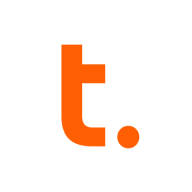

Teradata and Dremio are leading solutions in the data management space, each offering unique capabilities. Teradata seems to have an edge in handling complex queries and providing robust data warehousing solutions, while Dremio stands out in adaptability and ease of use.
Features: Teradata is recognized for its massive parallel processing abilities, advanced workload management, and comprehensive analytics suited for large enterprises. It supports complex queries and integrates with various platforms. Dremio offers adaptability and ease of use with seamless data lake integration, an efficient data lineage system, and enhanced data manageability.
Room for Improvement: Teradata faces challenges with cost, cloud adaptability, and handling unstructured data. Users note high pricing and scaling complexity. Dremio needs to improve SQL capabilities, query execution speed, and connection support to diverse sources. Both can enhance documentation and licensing models.
Ease of Deployment and Customer Service: Teradata provides flexible deployment options, including on-premises, hybrid, and cloud, and is known for strong technical support. Dremio focuses on cloud and hybrid cloud deployments, suitable for agile environments, but could enhance support resources and resolution times.
Pricing and ROI: Teradata is expensive but offers justifiable ROI for enterprises, with various flexible pricing models, though cost is a concern. Dremio is seen as cost-effective, especially compared to competitors like Snowflake, and users find its pricing aligned with capabilities.
Dremio surely saves time, reduces costs, and all those things because we don't have to worry so much about the infrastructure to make the different tools communicate.
At least fifteen to twenty percent of our time has been saved using Teradata, which has positively affected team productivity and business outcomes.
We have realized a return on investment, with a reduction of staff from 27 to eight, and our current return on investment is approximately 14%.
We have had to reach out for customer support many times, and they respond, so they are pretty supportive about some long-term issues.
The customer support for Teradata has been great.
Customer support is very good, rated eight out of ten under our essential agreement.
The technical support from Teradata is quite advanced.
Dremio's scalability can handle growing data and user demands easily.
Internally, if it's on Docker or Kubernetes, scalability will be built into the system.
Whenever we need more resources, we can add that in Teradata, and when not needed, we can scale it down as well.
This expansion can occur without incurring downtime or taking systems offline.
Scalability is complex as you need to purchase a license and coordinate with Teradata for additional disk space and CPU.
I rate Dremio a nine in terms of stability.
I find the stability to be almost a ten out of ten.
The workload management and software maturity provide a reliable system.
Starburst comes with around 50 connectors now.
It should be easier to get Arctic or an open-source version of Arctic onto the software version so that development teams can experiment with it.
I see that many times the new versions of Dremio have not fixed old bugs, and in some new versions, old problems that were previously fixed come back again, so I think the upgrade part could use improvement.
Unlike SQL and Oracle, which have in-built replication capabilities, we don't have similar functionality with Teradata.
The most challenging aspect is finding Teradata resources, so we are focusing on internal training and looking for more Teradata experts.
If the same thing were available in a web interface, that would be really helpful.
Teradata is much more expensive than SQL, which is well-performed and cheaper.
Initially, it may seem expensive compared to similar cloud databases, however, it offers significant value in performance, stability, and overall output once in use.
We spent roughly $295,000 on setup costs.
Having everything under one system and an easier-to-work-with interface, along with having API integrations, adds significant value to working with Dremio.
You just get the source, connect the data, get visualization, get connected, and do whatever you want.
The first feature that stands out for me in Dremio is the federated type of query, which allows the possibility to use multiple endpoints without worrying about writing custom SQL that runs only for SQL Server or for Postgres and Redshift.
Teradata's security helps our organization meet compliance requirements such as GDPR and IFRS, and it is particularly essential for revenue contracting or revenue recognition.
The first thing that I appreciate about Teradata is its multi-parallel processing. Whatever queries we execute on Teradata, they are blazingly fast, so it offers really fast connectivity.
The data mover is valuable over the last two years as it allows us to achieve data replication to our disaster recovery systems.
| Product | Market Share (%) |
|---|---|
| Teradata | 8.8% |
| Dremio | 7.9% |
| Other | 83.3% |


| Company Size | Count |
|---|---|
| Small Business | 1 |
| Midsize Enterprise | 5 |
| Large Enterprise | 5 |
| Company Size | Count |
|---|---|
| Small Business | 26 |
| Midsize Enterprise | 12 |
| Large Enterprise | 50 |
Dremio is a data analytics platform designed to simplify and expedite the data analysis process by enabling direct querying across multiple data sources without the need for data replication. This solution stands out due to its approach to data lake transformation, offering tools that allow users to access and query data stored in various formats and locations as if it were all in a single relational database.
At its core, Dremio facilitates a more streamlined data management experience. It integrates easily with existing data lakes, allowing organizations to continue using their storage of choice, such as AWS S3, Microsoft ADLS, or Hadoop, without data migration. Dremio supports SQL queries, which means it seamlessly integrates with familiar BI tools and data science frameworks, enhancing user accessibility and reducing the learning curve typically associated with adopting new data technologies.
What Are Dremio's Key Features?
What Benefits Should Users Expect?
When evaluating Dremio, potential users should look for feedback on its query performance, especially in environments with large and complex data sets. Reviews might highlight the efficiency gains from using Dremio’s data reflections and its ability to integrate with existing BI tools without significant changes to underlying data structures. Also, check how other users evaluate its ease of deployment and scalability, particularly in hybrid and cloud environments.
How is Dremio Implemented Across Different Industries?
Dremio is widely applicable across various industries, including finance, healthcare, and retail, where organizations benefit from rapid, on-demand access to large volumes of data spread across disparate systems. For instance, in healthcare, Dremio can be used to analyze patient outcomes across different data repositories, improving treatment strategies and operational efficiencies.
What About Dremio’s Pricing, Licensing, and Support?
Dremio offers a flexible pricing model that caters to different sizes and types of businesses, including a free community version for smaller teams and proof-of-concept projects. Their enterprise version is subscription-based, with pricing varying based on the deployment scale and support needs. Customer support is comprehensive, featuring dedicated assistance, online resources, and community support.
Teradata is a powerful tool for handling substantial data volumes with its parallel processing architecture, supporting both cloud and on-premise environments efficiently. It offers impressive capabilities for fast query processing, data integration, and real-time reporting, making it suitable for diverse industrial applications.
Known for its robust parallel processing capabilities, Teradata effectively manages large datasets and provides adaptable deployment across cloud and on-premise setups. It enhances performance and scalability with features like advanced query tuning, workload management, and strong security. Users appreciate its ease of use and automation features which support real-time data reporting. The optimizer and intelligent partitioning help improve query speed and efficiency, while multi-temperature data management optimizes data handling.
What are the key features of Teradata?In the finance, retail, and government sectors, Teradata is employed for data warehousing, business intelligence, and analytical processing. It handles vast datasets for activities like customer behavior modeling and enterprise data integration. Supporting efficient reporting and analytics, Teradata enhances data storage and processing, whether deployed on-premise or on cloud platforms.
We monitor all Cloud Data Warehouse reviews to prevent fraudulent reviews and keep review quality high. We do not post reviews by company employees or direct competitors. We validate each review for authenticity via cross-reference with LinkedIn, and personal follow-up with the reviewer when necessary.